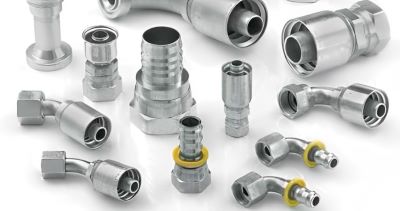Hydraulic systems are the backbone of countless industrial applications, from heavy machinery to automotive systems. At the heart of these systems lie hydraulic fittings, which connect components and ensure fluid flow. While essential, identifying the correct hydraulic fitting can be a daunting task for those unfamiliar with their intricacies.
This guide will demystify the process, providing you with the knowledge to confidently identify and select the right fittings for your needs.
Understanding Basic Hydraulic Fitting Components
Before diving into specific fitting types, let’s familiarize ourselves with the fundamental components that make up most hydraulic fittings:
➡️ Swivel: This component allows for flexible connection and rotation between fittings.
➡️ Nipple: A cylindrical piece with threads on both ends, connecting two fittings or a fitting to a component.
➡️ Adapter: Used to connect fittings with different sizes, types, or threads.
Hydraulic fittings are broadly categorized into two main types:
➡️ Hose Fittings: Designed to connect hoses to other components. They typically have a flared or crimped end to secure the hose.
➡️ Tube Fittings: Used to connect rigid metal tubing. They often feature compression or flare styles.
Common Hydraulic Fitting Types and Their Identification
A plethora of hydraulic fitting standards exist, each with its unique design and specifications. Among the most prevalent kinds are:
➡️ JIC (Joint Industrial Council): Widely used in North America, JIC fittings feature a 37-degree flare angle.
➡️ SAE (Society of Automotive Engineers): Another common standard, SAE fittings offer various types, including O-ring face seal (ORFS) and straight thread seal (STS).
➡️ BSP (British Standard Pipe): Popular in the UK and other countries, BSP fittings have a parallel thread design.
➡️ ORFS (O-Ring Face Seal): Known for its leak-resistant properties, ORFS fittings use an O-ring to create a seal.
Identifying the correct fitting type often involves examining its shape, angle, and markings. Look for specific features like the flare angle, thread type, and any imprinted codes or symbols.
How to Read Hydraulic Fitting Markings
Hydraulic fittings are typically marked with information about their size, type, and material. Understanding these markings is crucial for accurate identification.
➡️ Size: Usually indicated by a number or letter, representing the fitting’s internal diameter or outside diameter.
➡️ Type: Fittings are often marked with abbreviations or symbols representing their standard (JIC, SAE, BSP, etc.).
➡️ Material: The fitting’s material, such as steel or stainless steel, may be stamped or etched on the fitting.
Practical Tips for Hydraulic Fitting Identification
When faced with an unknown fitting, follow these steps:
➡️ Visual Inspection: Examine the fitting’s shape, angle, and any visible markings.
➡️ Measurement: Use calipers or micrometers to measure the fitting’s dimensions accurately.
➡️ Reference Materials: Consult technical manuals, catalogs, or online resources for comparison.
➡️ Test Fitting (if possible): Carefully attempt to fit the fitting with different components to determine compatibility.
Remember to prioritize safety when handling hydraulic fittings. Wear appropriate protective gear and avoid applying excessive force.
Troubleshooting Common Hydraulic Fitting Issues
Incorrect fitting identification can lead to leaks, system failures, and costly downtime. Common problems include:
➡️ Cross-threading: Avoid by aligning threads carefully before tightening.
➡️ Overtightening: Excessive force can damage fittings and cause leaks.
➡️ Incorrect Fitting Type: Mismatched fittings will not create a proper seal.
To prevent these issues, always verify fitting compatibility, use the correct tools, and follow recommended torque specifications.
Conclusion
Mastering hydraulic fitting identification is essential for anyone working with hydraulic systems. By understanding basic components, recognizing common fitting types, and interpreting markings, you can confidently select the correct fittings for your applications.
Remember to prioritize safety and consult additional resources for further guidance.
Post time: Aug-09-2024


